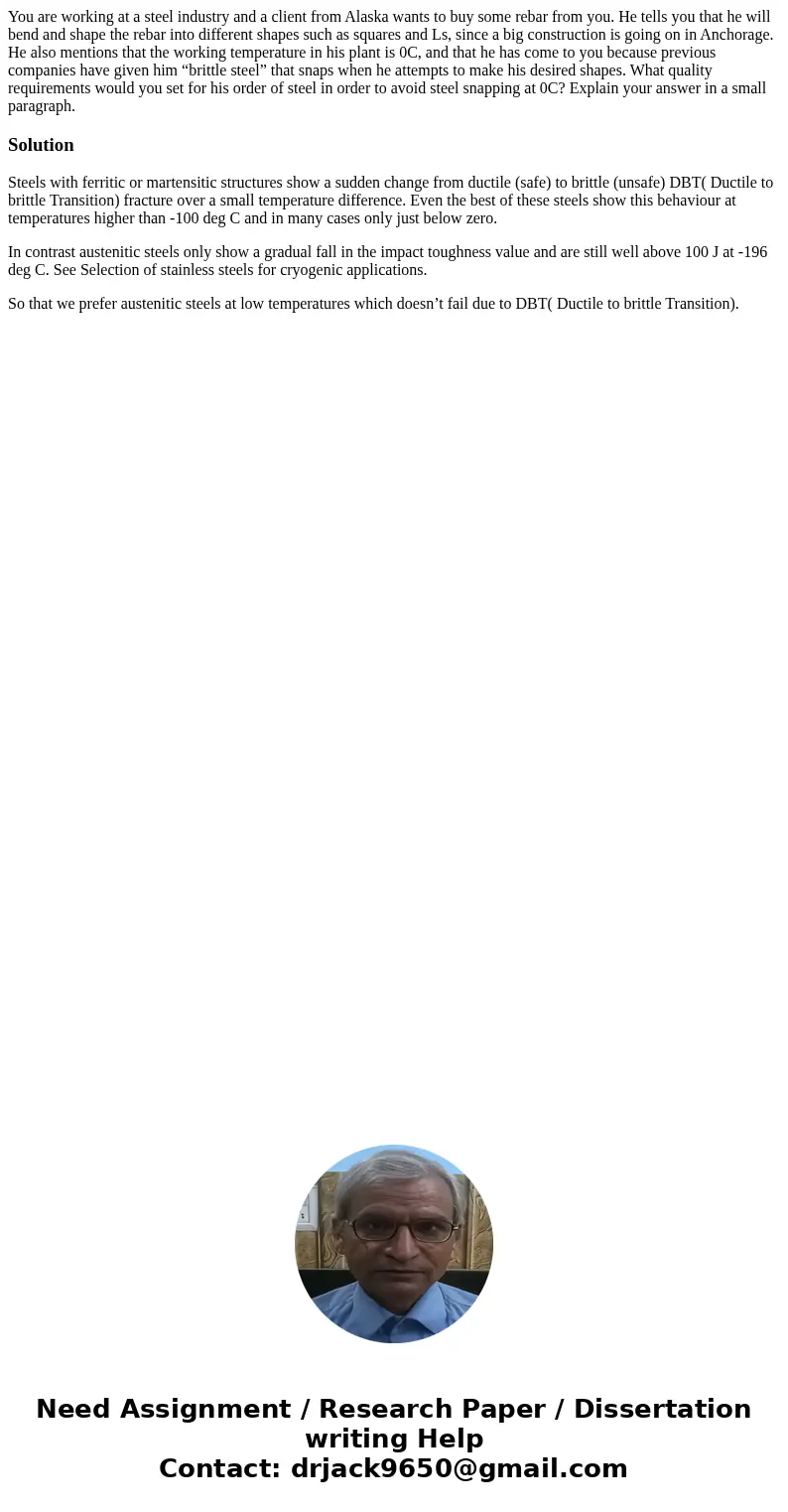You are working at a steel industry and a client from Alaska
You are working at a steel industry and a client from Alaska wants to buy some rebar from you. He tells you that he will bend and shape the rebar into different shapes such as squares and Ls, since a big construction is going on in Anchorage. He also mentions that the working temperature in his plant is 0C, and that he has come to you because previous companies have given him “brittle steel” that snaps when he attempts to make his desired shapes. What quality requirements would you set for his order of steel in order to avoid steel snapping at 0C? Explain your answer in a small paragraph.
Solution
Steels with ferritic or martensitic structures show a sudden change from ductile (safe) to brittle (unsafe) DBT( Ductile to brittle Transition) fracture over a small temperature difference. Even the best of these steels show this behaviour at temperatures higher than -100 deg C and in many cases only just below zero.
In contrast austenitic steels only show a gradual fall in the impact toughness value and are still well above 100 J at -196 deg C. See Selection of stainless steels for cryogenic applications.
So that we prefer austenitic steels at low temperatures which doesn’t fail due to DBT( Ductile to brittle Transition).

 Homework Sourse
Homework Sourse